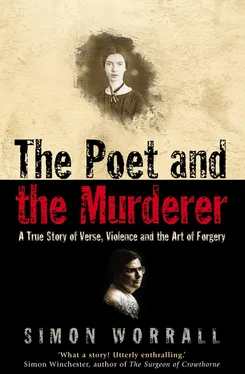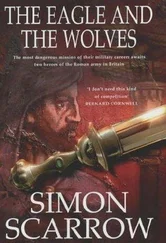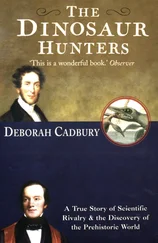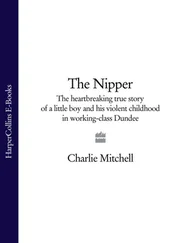At the time of his arrival, in 1982, the Jones Library’s rich collection of literary and historical manuscripts was languishing in obscurity, the victim of budget constraints. The books, photographs, and manuscripts were poorly cataloged, and dispersed over nine rooms on two floors. Lombardo lobbied long and hard for funding. Working with an architect, he then oversaw the restoration of the second floor of the library where the Special Collections were housed. Lombardo wanted to make the people of Amherst feel that the Special Collections department was not just for scholars and academics but belonged to everyone. He helped design a large exhibition space and a reading room with armchairs and Persian rugs on the floor. Using old photographs and other archive material, as well as their manuscripts, he organized permanent exhibitions on both Emily Dickinson and Robert Frost, which became destinations for travelers and school groups, as well as scholars.
He wanted people to experience these writers not as the remote historical figures of academic study but as flesh-and-blood people who had lived and worked in the town, just like them. He began to write a weekly column in the Amherst Bulletin about every aspect of the history of the town. It was not the usual quaint version of local history. Lombardo was interested in the nitty-gritty of life, not the poetic illusion. He described the lives of prostitutes and the abuse of opium. He wrote about the entertainers who had passed through the town and the conditions in the surrounding factories. Readers loved these stories and clipped them from the paper. When Garrison Keillor came to Amherst to broadcast Tales of Lake Wobegone , he wove several of Dan’s stories into his monologues.
Meanwhile, Dan went on improving the Special Collections department. He oversaw the installation of state-of-the-art climate-control systems; equipped a paper conservation studio; and ushered in the digital age by computerizing the cataloging and indexing of the library’s manuscripts. He doubled the size of the historic photograph collection, broadening its scope to include rare photos of African Americans at end of the nineteenth century, as well as photos from across the country and from Europe. Lombardo always felt that culture should not be the preserve of dead white people of European origin. He arranged for the donation of the Julius Lester Collection, the archives of a prominent African American writer and activist with close connections to Amherst. And he augmented the Frost and Dickinson collections with manuscripts he acquired at auction and through rare book and manuscript dealers. With each successfully completed project his self-confidence grew. The more he learned, the surer he felt of the decisions he made. The more others trusted and believed in him, the more he trusted and believed in himself.
He could not go to the auction personally – he was leaving on a long-planned trip to Italy the next day – so he had arranged to bid by phone. The poem was Lot 74. Sotheby’s had advised him that bidding would begin at 2:30 P.M. and had arranged to call him two lots before. At 2:00 P.M. Lombardo installed himself in the director’s office in the basement of the Jones Library. All calls come in there, and Lombardo wanted to be sure that he had an open line. On the desk in front of him he had a sheet of figures that told him at each point of the bidding what Sotheby’s 12.5 percent commission would add on.
Lombardo disliked telephone bidding. Things move so fast, and there are no visual cues as to how many people are bidding or who they are. But he had bid at auctions before, both by phone and in person, and been successful. Working as a drummer on studio sessions had also taught him about pressure. One mistake, a mishit cymbal or a slip of the foot, can ruin a take. As the minutes ticked toward 2:30 P.M., his heart began to beat faster. Finally the phone rang. A woman speaking in a low voice told him that the auction had reached Lot 69. In the background he could hear the voice of the auctioneer on Madison Avenue. He imagined the limousines lined up along the curb outside and the liveried doormen ushering in the rich and powerful collectors who lived on Central Park and spent more on travel than he earned in a year.
Bidding at a Sotheby’s auction was like playing in a high-stakes poker game. There was the same adrenaline rush and the same feeling of euphoria when your bid was accepted. Every time Lombardo had been involved in an auction and been successful, he had felt an enormous high. His bidding strategy was never to be in on the early stages so as not to heat up the auction.
There was a write-in bid for $8,000, and the bidding on the poem started there, jumping in increments of $500 in seconds. The young woman at the end of the line kept asking, ‘Do you want to bid? Do you want to bid?’ But Lombardo held back and grew more and more anxious. If this did not stop soon, he thought, it would spiral beyond his budget of $20,000. But at $15,000 the pace of the bidding slowed. And at $17,000 Lombardo jumped in. In poker you say, ‘Hit me.’ At Sotheby’s the word is ‘Bid.’ Lombardo’s first bid was immediately countered by one for $18,000. Lombardo bid again. One more bid and he would have to get out. His invisible opponent bid $20,000. Lombardo bid $21,000. It was his last bid, and he felt sure that whoever he was bidding against would keep going. But at $21,000 the hammer came down. Lot 74 was coming home to Amherst.
‘I went out and told everyone who was waiting outside the door,’ he recalled, ‘“We got it!” And they all started hugging me and crowding around. People were so excited. They all felt a sense of personal involvement. It was a privilege to be part of this. I was being flooded with congratulations and warmth. It was as though the sky had opened up, a lightning bolt had come down, and God said, “This is your moment.”’
Helped by a group of volunteers, he spent the rest of the afternoon calling members of the Emily Dickinson International Society. Twenty-four hours later he boarded a plane to Italy. The trip with his family – to Rome, the Adriatic, and the medieval hill towns of Umbria – was an important family occasion. His aging mother would probably be seeing the relatives she had grown up with for the last time. As the plane sped toward Italy, he felt, literally, on top of the world.
On his arrival back in Amherst, the first thing Lombardo did was to go through all the articles that had been written about the poem. People in Amherst had already started to come into the library to see it, even though red tape at Sotheby’s meant that it would take several more weeks to arrive. In the meantime Lombardo began to organize an exhibition for the end of July, with the theme of how to date a poem. He would draw attention to similarities in the handwriting with two other Dickinson manuscripts the library owned. So, he wrote a brief essay about the paper and the boss mark. And, again, he consulted with Ralph Franklin at the Beinecke Library.
According to Franklin the handwriting exactly matched the date given by Sotheby’s, 1871. Lombardo was particularly curious to know who had written the words ‘Aunt Emily’ on the back of the poem. They were in a different hand. Unlike the poem, which was written in ordinary black lead, the words ‘Aunt Emily’ were in what appeared to be red pencil. Lombardo’s first supposition was that they had been written either by Ned or Martha Dickinson, the poet’s nephew and niece. He had samples of Martha’s handwriting at the library. For Ned’s handwriting he contacted Brown University, who sent him photocopies of letters that Ned Dickinson had written to his sister. Neither matched.
This did not especially worry him. Dickinson had numerous cousins, on both her father’s and mother’s side. Perhaps the poem had been written for one of her cousins in Boston, Fanny or Lou Norcross. Perhaps one or the other of them had written ‘Aunt Emily’ on the back of the poem, then filed it away as a memento of her illustrious relation.
Читать дальше












